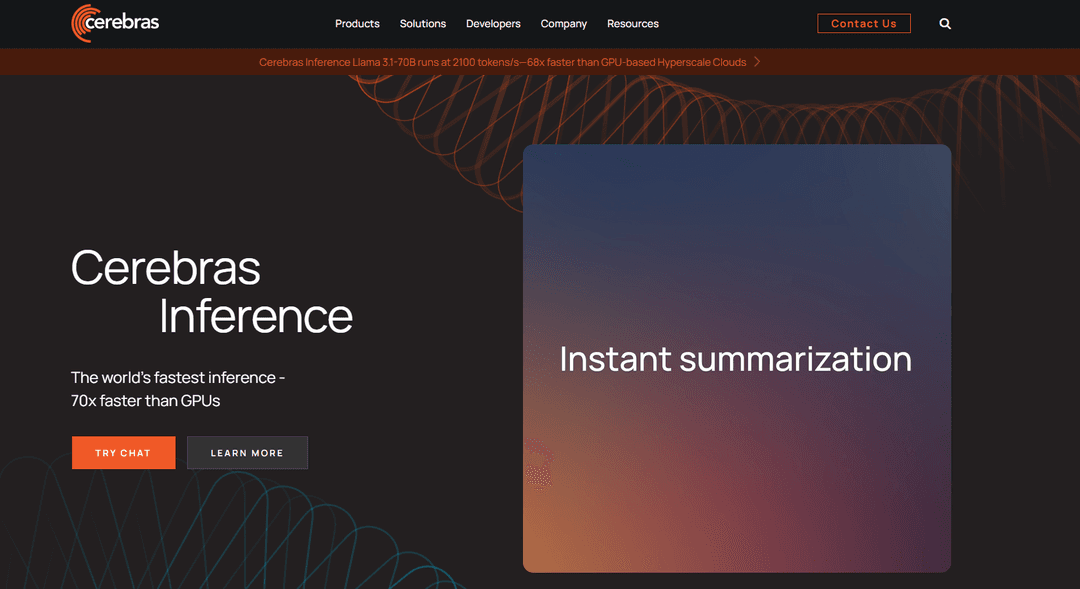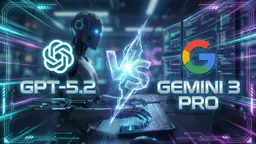Cerebras
Cerebras Systems is a pioneering AI computing company that builds the world's largest and fastest AI processor - the Wafer Scale Engine (WSE) - designed to accelerate AI training and inference workloads.
https://cerebras.ai/

Product Information
Updated:Jul 16, 2025
Cerebras Monthly Traffic Trends
Cerebras experienced a 2.4% increase in visits, reaching 205.8K. While the growth is slight, the company's continued expansion of AI infrastructure, including the upcoming Oklahoma City data center, and the launch of new AI models such as Qwen3-32B may have contributed to this modest increase.
What is Cerebras
Founded in 2015, Cerebras Systems is an American artificial intelligence company headquartered in Sunnyvale, with offices in San Diego, Toronto, and Bangalore. The company specializes in developing revolutionary wafer-scale computer chips and AI systems for complex deep learning applications. Their flagship product, the Cerebras Wafer Scale Engine (WSE), is the largest computer chip ever built, about the size of a dinner plate, containing over 1.2 trillion transistors. The company has recently filed for IPO and is valued at over $4 billion, marking its significant position in the AI hardware market.
Key Features of Cerebras
Cerebras is a pioneering AI computing company that develops the world's largest AI chip (Wafer Scale Engine) and AI supercomputers. Their technology offers revolutionary performance for AI training and inference, featuring unprecedented memory bandwidth, integrated on-chip storage, and specialized architecture for AI workloads. The company's latest WSE-3 chip delivers superior speed and efficiency compared to traditional GPU solutions, capable of handling models with up to 24 trillion parameters.
Wafer Scale Engine (WSE): The largest computer chip in the world, size of a dinner plate, with 44GB on-chip SRAM and 900,000 compute cores, enabling entire AI models to be stored directly on the chip
High-Speed Inference: Delivers up to 2100 tokens/s for LLM inference, which is 68x faster than GPU-based cloud solutions, with one-third the cost and one-sixth the power consumption
Integrated Memory Architecture: Features 21 petabytes/s of aggregate memory bandwidth (7000x that of Nvidia H100), eliminating traditional memory bottlenecks in AI processing
Simplified Programming Model: Eliminates the need for complex distributed programming and cluster management through integrated software platform compatible with TensorFlow and PyTorch
Use Cases of Cerebras
Large Language Model Training: Accelerates the training of massive language models from months to hours, supporting models with billions to trillions of parameters
Healthcare AI Development: Partners with institutions like Mayo Clinic to develop specialized AI models for healthcare applications and research
High-Performance Computing: Powers supercomputing centers and research facilities for scientific computing and complex simulations
Enterprise AI Inference: Provides high-speed, cost-effective inference services for businesses deploying large AI models in production environments
Pros
Unprecedented processing speed and efficiency for AI workloads
Simplified programming and deployment compared to distributed systems
Superior memory bandwidth and integrated architecture
Cons
High initial investment cost
Heavy reliance on single customer (G42) for revenue
Relatively new technology with limited track record compared to established solutions
How to Use Cerebras
Sign up for Cerebras API access: Visit cerebras.ai and request access to their inference API service. You'll receive an API key once approved.
Choose your model: Select from available models like Llama 3.1-8B or Llama 3.1-70B based on your needs and budget. Pricing is 10¢ per million tokens for 8B model and 60¢ per million tokens for 70B model.
Integrate the API: Use the familiar OpenAI Chat Completions format - simply swap out the API key to integrate Cerebras' inference capabilities into your application.
Access documentation: Visit docs.cerebras.ai for detailed API documentation, tutorials and guides on using the Cerebras SDK to integrate LLMs into your applications.
Optional: Use Model Studio Builder: For custom model training, use Model Studio Builder to access Cerebras Wafer-Scale Cluster and Model Zoo to further customize your model.
Optional: Framework Integration: If using TensorFlow or PyTorch, integrate with Cerebras Software Platform to bring your models to the CS-2 system.
Monitor Usage: Track your token usage and costs through the platform dashboard to manage your inference workloads.
Cerebras FAQs
Cerebras Systems Inc. is an American artificial intelligence (AI) company founded in 2015 that builds computer systems for complex AI deep learning applications. They have offices in Sunnyvale, San Diego, Toronto, and Bangalore, India.
Official Posts
Loading...Related Articles
Popular Articles

OpenAI GPT-5.2 vs Google Gemini 3 Pro: Latest Review 2025
Dec 16, 2025

Why Rewritify AI Is the Best "AI Humanizer" for Undetectable, Human Like Writing in 2025
Dec 11, 2025

FLUX.2 vs Nano Banana Pro in 2025: Which one do you prefer?
Nov 28, 2025

How to Use Nano Banana Pro Free in 2025 — Complete Guide (Step-by-Step)
Nov 26, 2025
Analytics of Cerebras Website
Cerebras Traffic & Rankings
205.8K
Monthly Visits
#201793
Global Rank
#330
Category Rank
Traffic Trends: Sep 2024-Jun 2025
Cerebras User Insights
00:02:29
Avg. Visit Duration
2.51
Pages Per Visit
49.32%
User Bounce Rate
Top Regions of Cerebras
US: 42.38%
KR: 8.78%
IN: 8.07%
CN: 5.27%
UA: 3.43%
Others: 32.07%









